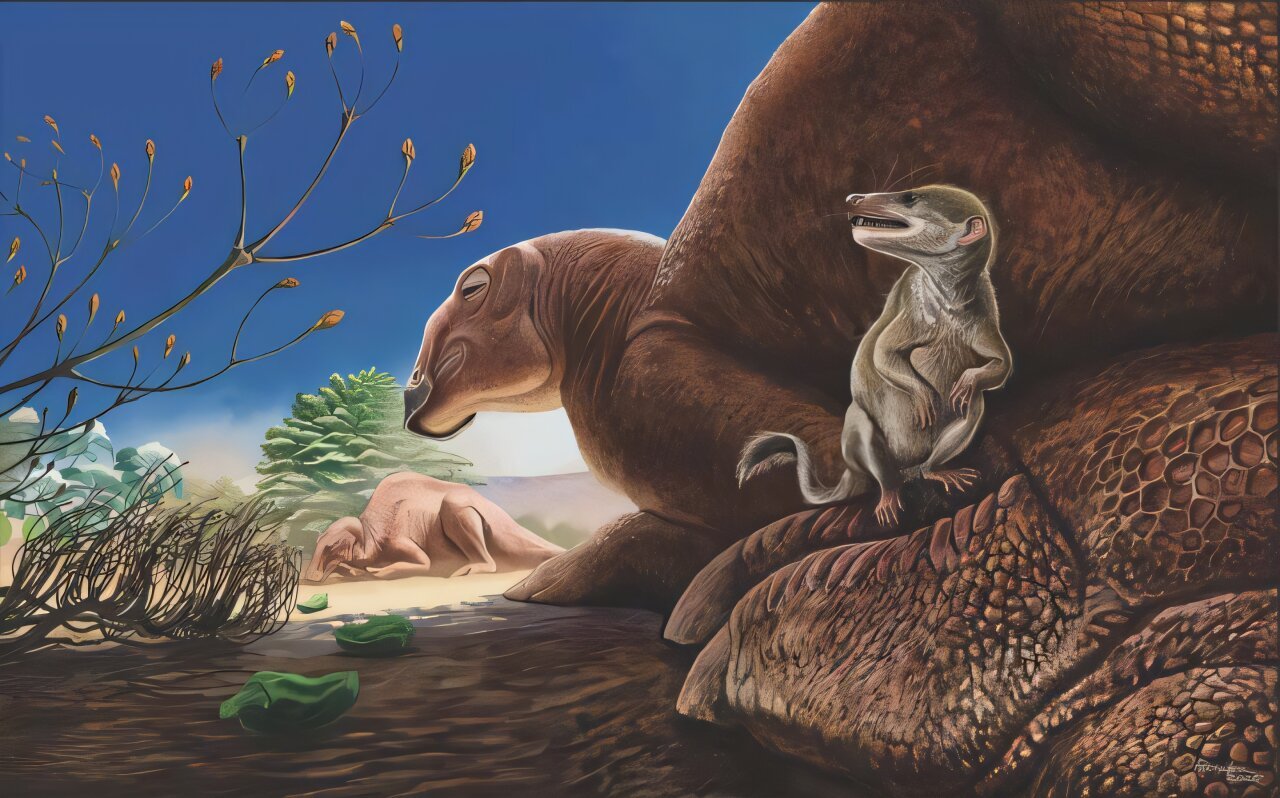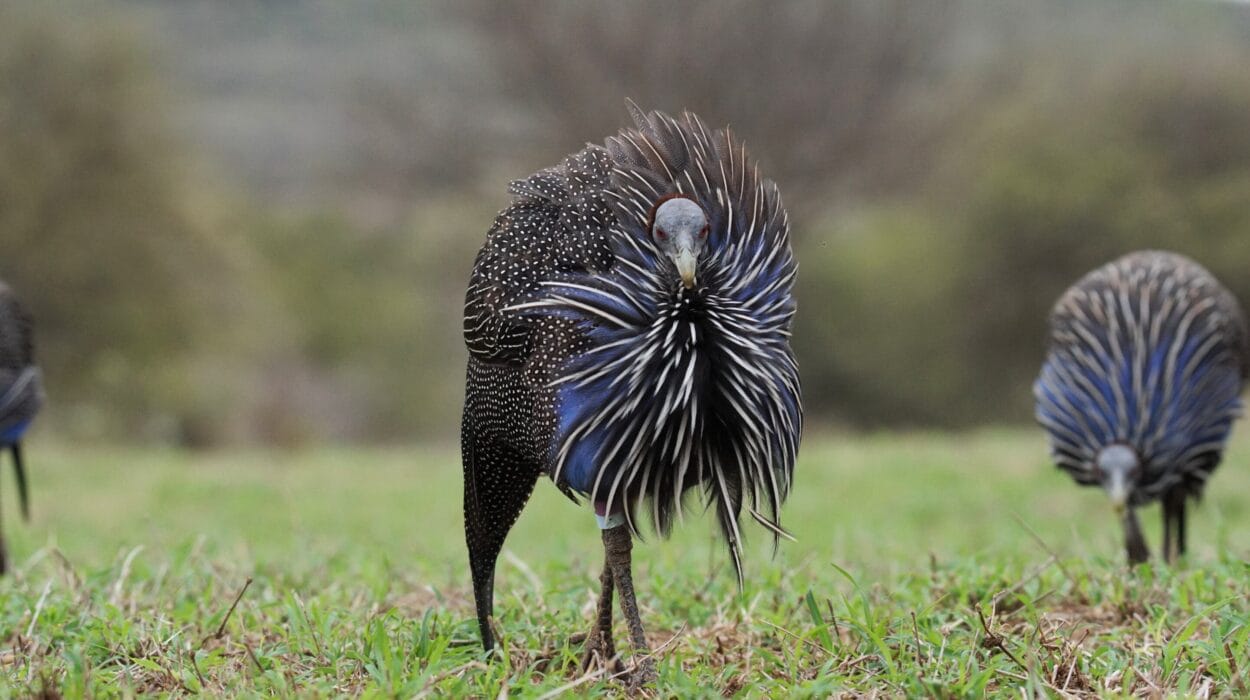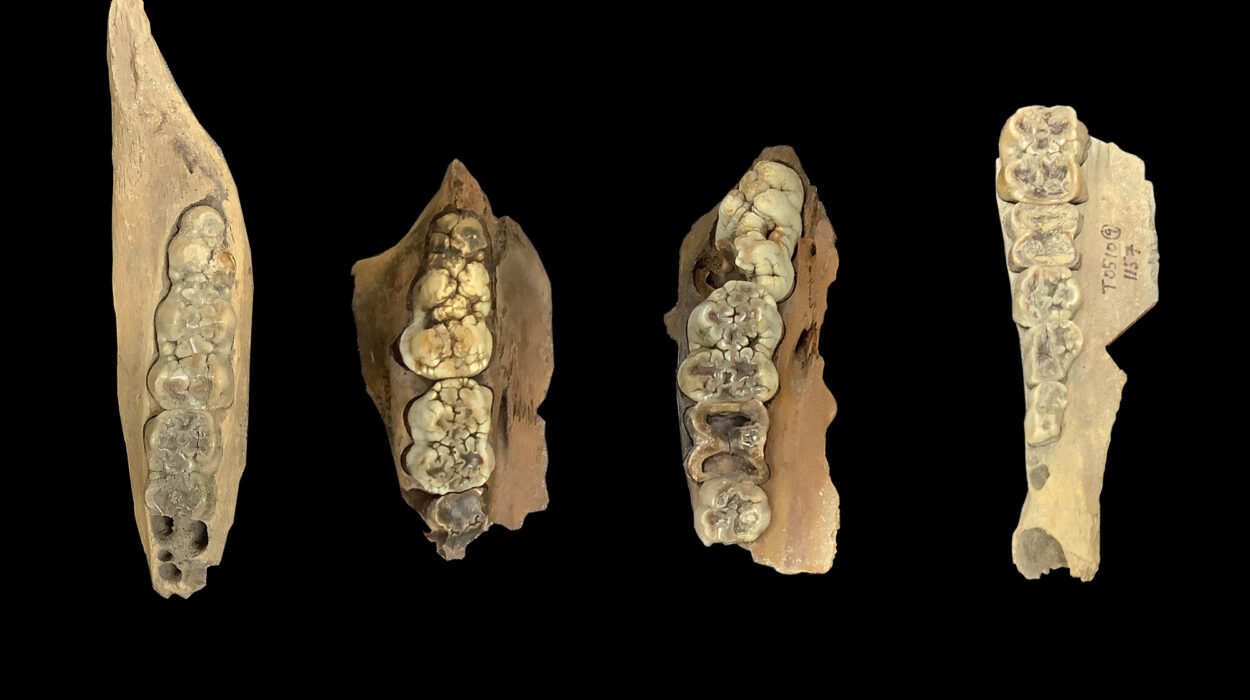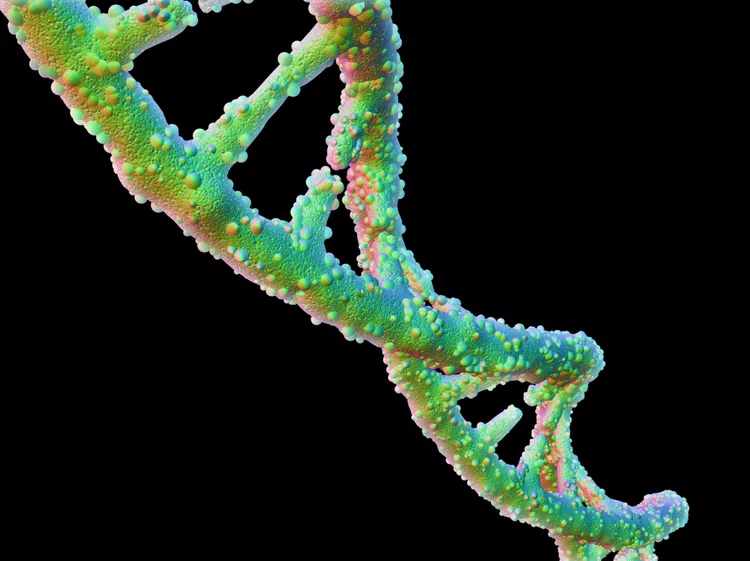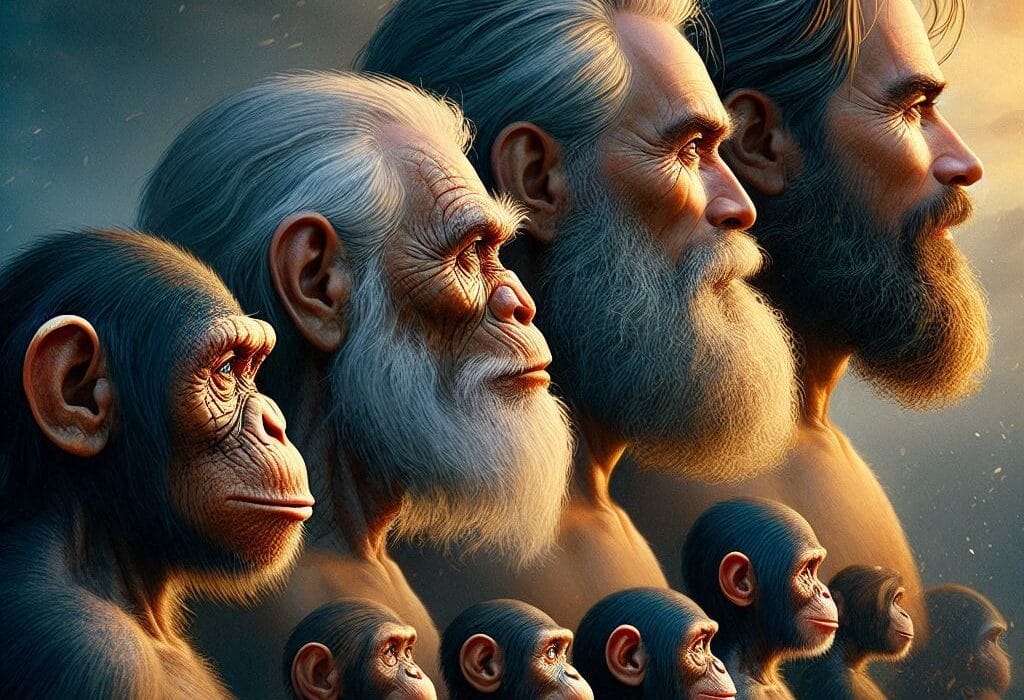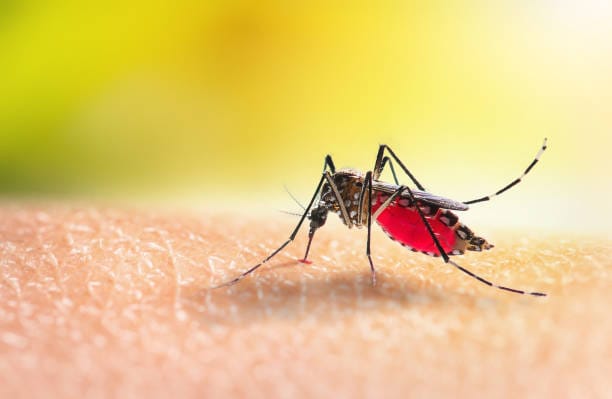In the sweeping silence of Mongolia’s Gobi Desert, where golden dunes stretch like ocean waves frozen in time and the wind whispers stories older than memory, a team of scientists stumbled upon a treasure—no larger than a grain of rice, but packed with the secrets of a vanished world. This wasn’t a shimmering gemstone or a lost relic of a forgotten civilization. It was a tiny fossil—a partial lower jaw, only about a centimeter long—belonging to a previously unknown genus and species of mammal from the Late Cretaceous period, some 100 to 66 million years ago.
This extraordinary discovery, now named Ravjaa ishiii, is rewriting the evolutionary story of mammals during the reign of dinosaurs and shedding new light on the ancient ecosystems of Central Asia. Published in the respected journal Acta Palaeontologica Polonica, the research emerged from a collaboration between the Institute of Paleontology and Geology of the Mongolian Academy of Sciences (IPMAS) and Okayama University of Science (OUS) in Japan.
A Fossil Born of Wind, Sand, and Scientific Vision
The journey of Ravjaa ishiii began not millions of years ago, but on a hot expedition day in 2019. A joint Mongolian–Japanese research team was exploring the Baynshire Formation, a fossil-rich region within the Gobi Desert known for its Late Cretaceous sedimentary layers. These ancient rocks preserve a hidden archive of prehistoric life, layered like chapters of a forgotten book.
Among scattered bone fragments and weather-worn rock, the team discovered a seemingly insignificant jawbone. But appearances are deceiving. This tiny fragment, no longer than a fingernail, held profound scientific significance. Once cleaned and examined in the lab, the jaw revealed a set of unusually tall molars and a distinct structural shape that didn’t match any known species. It bore the hallmarks of Zhelestidae, an extinct family of eutherian mammals—early relatives of modern placentals—but with features unique enough to declare it a whole new genus and species.
Such an identification is never made lightly. It took years of meticulous analysis, comparison, and peer review to confirm that Ravjaa ishiii was indeed a newcomer in the fossil record—a mammal no one had ever seen before.
A Name Woven in Cultural and Scientific Legacy
Naming a new species is both a scientific duty and a poetic act. The name Ravjaa ishiii carries two homages within it. The species name, ishiii, honors Kenichi Ishii, the late director of the Hayashibara Museum of Natural Sciences in Japan, who played a pivotal role in fostering the Mongolia–OUS research alliance. The genus name, Ravjaa, pays tribute to Dulduityn Danzanravjaa, a revered 19th-century Mongolian Buddhist monk, educator, and poet whose legacy continues to inspire Mongolian cultural identity.
In these names, the fossil is anchored not only in deep time but also in the human relationships and cultural heritage that helped bring it to light. It is a reminder that science is not an isolated endeavor—it is a bridge between eras, ideas, and people.
Not Just Coastal: A Mammal Who Lived Far from the Sea
Until now, zhelestid mammals like Ravjaa ishiii had mainly been found in ancient coastal deposits from the Cretaceous period, leading scientists to believe they favored shoreline environments. But the Baynshire Formation lies deep within what was once the interior of the Cretaceous landmass.
The presence of a zhelestid here radically expands the known geographic range of these mammals. It suggests they were far more adaptable than previously thought—capable of thriving not just near the sea but also in inland ecosystems, which were dynamic, evolving habitats shaped by volcanic activity, shifting rivers, and, importantly, the dawn of flowering plants.
Ancient Teeth Tell a Tasty Tale
What might Ravjaa ishiii have eaten in its Cretaceous world? Its molars tell the tale.
The teeth of mammals are often the most informative fossils we find. In the case of Ravjaa ishiii, its molars are surprisingly robust and tall for its size—traits associated with animals that eat hard or fibrous materials. This points toward a diet that likely included seeds, nuts, or fruits. The timing here is fascinating.
The Baynshire Formation dates back to the era when angiosperms, or flowering plants, were beginning their dramatic rise across Earth’s terrestrial ecosystems. This evolutionary explosion created new ecological niches—ones filled with fruits, seeds, and flowering vegetation. The dental structure of Ravjaa ishiii suggests that early eutherian mammals were already exploiting these new food sources, showing a complex and responsive ecological relationship between plants and animals even at this early stage.
In this way, a tiny jawbone becomes a window into how ancient mammals adapted, diversified, and survived in a world dominated by dinosaurs.
A Global Team, a Local Wonder
The discovery is the result of years of collaboration, not just between two institutions, but between two nations and two scientific traditions.
Leading author Tsukasa Okoshi, a doctoral candidate at Okayama University of Science, reflected on the challenges and triumphs of this work. “Due to the COVID-19 pandemic, the publication process took longer than expected,” he said. “But we were finally able to establish the scientific importance of this specimen. We hope this research will serve as a starting point for further taxonomic studies of other small vertebrate fossils from the same site and era and will ultimately help uncover the rich biodiversity—including dinosaurs—that once inhabited the Gobi Desert during the age of dinosaurs.”
Professor Mototaka Saneyoshi of OUS described the emotional impact of such a discovery: “Finding such a tiny fossil in the vast expanse of the Gobi Desert feels like a gift from the Gobi Desert. It’s nothing short of miraculous.”
Their words resonate with a deeper truth in paleontology: while the work is technical and often painstaking, the results offer moments of awe that connect us directly to the mysteries of life itself.
Reconstructing a Lost World One Fossil at a Time
Every fossil tells a story, but few can open an entirely new chapter. Ravjaa ishiii does just that. It provides evidence that the evolutionary experimentation of mammals during the Cretaceous was broader and more complex than previously known. It suggests that mammals were not merely scurrying survivors in the shadows of dinosaurs—they were explorers of ecological niches, feeding on the fruits of a rapidly changing world.
Moreover, the discovery underscores the importance of microfossils—the tiniest remains of long-dead creatures. While towering dinosaur skeletons capture the public imagination, it is often these smaller, more delicate remains that reveal the subtleties of evolutionary history.
As paleontologists continue to revisit the Gobi Desert, aided by ever-improving technologies like micro-CT scanning and digital reconstruction, we can expect more finds like Ravjaa ishiii. Each one has the potential to reshape our understanding not just of when and where certain animals lived, but how they lived, what they ate, and how they interacted with the flora and fauna of their time.
The Silence of the Sands, the Voice of Science
The Gobi Desert remains one of the most important fossil-hunting grounds in the world. Its sun-scorched surface hides a spectacular record of prehistoric life, from towering theropods to delicate mammalian ancestors like Ravjaa ishiii. Beneath the silence of these shifting sands lies a living laboratory of Earth’s evolutionary past.
In the grand tapestry of life on Earth, Ravjaa ishiii may be a single thread—but it is one that glows brightly, woven with the vibrant colors of discovery, heritage, and international cooperation. As we unravel more such threads, our picture of the past becomes richer, more intricate, and infinitely more fascinating.
Reference: Tsukasa Okoshi et al, A new eutherian mammal from the Upper Cretaceous Bayanshiree Formation, Mongolia, Acta Palaeontologica Polonica (2025). DOI: 10.4202/app.01213.2024
